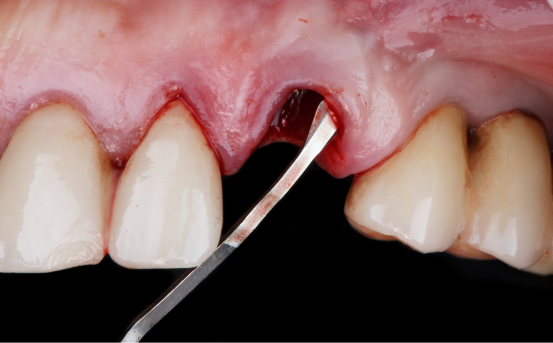Gallstones may be small, but they can cause significant discomfort and complications when left untreated. These pebble-like substances form in your gallbladder and are more common than many people realize. Gallstones can range in size from a grain of sand to as large as a golf ball, and their presence can go unnoticed until they start causing pain or blocking bile flow.
What is Gallstones?
Gallstones are hardened deposits that form inside the gallbladder a small, pear-shaped organ located beneath the liver. The gallbladder’s main function is to store and concentrate bile, a digestive fluid that helps break down fats. When the components of bile such as cholesterol, bile salts, and bilirubin become imbalanced, they can crystallize and form stones.
There are two main types of gallstones:
- Cholesterol Gallstones :- The most common type, primarily made of undissolved cholesterol.
- Pigment Gallstones :- Smaller and darker, usually formed from excess bilirubin.
While some people live their entire lives with gallstones without any symptoms, others experience intense pain and serious complications, especially when a stone obstructs a bile duct.
Why Do Gallstones Form?
Understanding the causes of gallstones can help in both prevention and early diagnosis. Several factors contribute to the development of gallstones:
- Excess Cholesterol in Bile :- If bile contains more cholesterol than it can dissolve, the excess cholesterol may form crystals that turn into stones.
- Impaired Gallbladder Emptying :- When the gallbladder doesn’t empty completely or often enough, bile may become concentrated and form stones.
- High Levels of Bilirubin :- Certain conditions like liver disease or infections can increase bilirubin production, leading to pigment stones.
- Diet and Lifestyle :- High-fat, low-fiber diets, obesity, and rapid weight loss can increase the risk.
- Hormonal Factors :- Women, particularly those who are pregnant or taking estrogen-based medications, are at higher risk due to hormonal changes that affect bile composition.
- Genetics and Ethnicity :- A family history of gallstones or being of Native American or Hispanic descent increases the likelihood of formation.
These risk factors often work in combination. For instance, a woman who is overweight and on hormone therapy may be at significantly higher risk than someone with only one of these factors.
Common Symptoms of Gallstones
Gallstones don’t always cause symptoms. When they do, it’s typically due to a blockage in the bile ducts. This condition is known as a gallstone attack or biliary colic.
Typical symptoms include:
- Sudden, intense pain in the upper right abdomen or center of the stomach
- Pain that radiates to the right shoulder or back
- Nausea and vomiting
- Indigestion, bloating, or gas
- Fever or chills (in case of infection)
- Jaundice (yellowing of the skin and eyes, indicating blocked bile flow)
Pain from gallstones often occurs after eating a fatty meal and can last from minutes to several hours. If symptoms become persistent or severe, it’s a sign that medical attention is needed.
How Are Gallstones Diagnosed?
If a patient presents with symptoms suggestive of gallstones, the doctor will typically begin with a physical exam and review of medical history, followed by diagnostic imaging.
Common diagnostic tools include:
- Ultrasound :- The most common and non-invasive method to detect gallstones.
- CT Scan or MRI :- Offers detailed imaging for complicated cases or unclear results.
- HIDA Scan (Hepatobiliary Iminodiacetic Acid Scan) :- Assesses how well the gallbladder functions.
- Endoscopic Ultrasound (EUS) :- A more sensitive method for detecting small stones in the bile duct.
Blood tests may also be done to check for signs of infection, inflammation, or bile duct obstruction.
Treatment Options for Gallstones
The treatment of gallstones depends on the severity of symptoms and the presence of complications.
- Watchful Waiting :- If gallstones are discovered incidentally and do not cause symptoms, no immediate treatment is necessary. These are known as “silent” gallstones. Patients are advised to monitor their health and report any new symptoms.
- Medications :- Oral bile acid pills like ursodeoxycholic acid can be used to dissolve cholesterol gallstones over time. However, this method is slow and stones may reappear once the medication is stopped. This is generally reserved for patients who cannot undergo surgery.
- Surgery (Cholecystectomy) :- The most effective and common treatment for gallstones causing symptoms is the removal of the gallbladder.
- Laparoscopic Cholecystectomy :- A minimally invasive procedure that removes the gallbladder through small incisions. Recovery is usually quick, with most patients returning home the same day.
- Open Cholecystectomy :- Required in complicated cases or when laparoscopic surgery is not feasible. Recovery takes longer.
Non-Surgical Procedures
In rare cases, techniques like shock wave lithotripsy or endoscopic removal of stones are used, especially when surgery is too risky. These are typically used to treat bile duct stones rather than those in the gallbladder itself.
Lifestyle and Dietary Tips for Prevention
Prevention is always better than cure, especially for gallstones. Healthy lifestyle choices can reduce the risk significantly.
- Maintain a healthy weight and avoid rapid weight loss.
- Eat a balanced diet rich in fiber, fruits, and vegetables.
- Choose healthy fats like omega-3s instead of trans fats.
- Stay physically active to improve digestion and metabolism.
- Drink plenty of water to help keep bile thin and flowing.
For those with a family history or other risk factors, regular health checkups can help in early detection and management.
Conclusion
Gallstones are a common but often underestimated condition. While many people may never experience symptoms, those who do can face significant pain and potential complications. Fortunately, with timely diagnosis and proper treatment whether surgical or non-surgical most patients recover fully and lead healthy lives.
Awareness of risk factors, dietary habits, and early symptoms can make a big difference. If you suspect gallstones, don’t ignore the warning signs. Consult a healthcare provider and take proactive steps to protect your digestive health.























